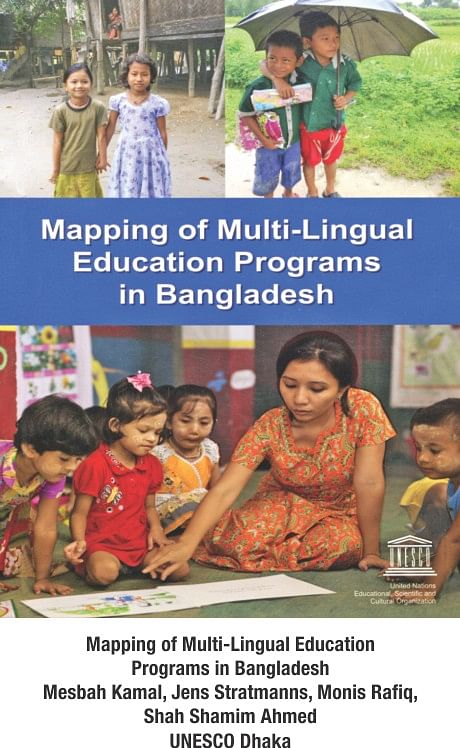Education for indigenous children
Education for indigenous children
Education for indigenous children

In our fervour for Bengali nationalism, we often tend to forget that here there are peoples who are not Bengalis, primarily because they do not identify themselves as such and are also actually different in many ways, though we all equally belong to Bangladesh. The mainstream people try not to recognize the differences among others and instead of finding beauty in diversity want to level all nationalities with the bulldozer of a single identity of their own. There are many indigenous communities with a population of around four million in Bangladesh. But successive governments have felt comfortable with the term 'ethnic minorities' instead of 'indigenous people' and thus have shown their reluctance to do away with various discriminations against them prevailing in society.
One manifestation of such discriminations is in the rate of drop-outs at primary school level, which is higher among indigenous peoples than among the mainstream population. One of the causes of this higher drop-out is the inability of children from indigenous communities to understand the textbook and the medium of instruction in the classroom, both in Bengali, a language unknown to many of them. Education and classroom instruction through the mother tongue of a child can play a strong role in retaining indigenous children longer in school and reducing drop-out numbers to a good extent. Such practices have been in action through non-government initiatives for some time in Bangladesh. But these efforts lack coordination at the national level. The first step in this is a mapping of all the multi-lingual education (MLE) programmes going on separately across the country. MLE Forum-CAMPE took the initiative to conduct such a mapping study in association with Research and Development Collective (RDC). The research report is authored by Professor Mesbah Kamal, Jens Stratmanns, Monis Rafiq and Shah Shamim Ahmed. UNESCO-Dhaka has now published this valuable report with support from Save the Children in Bangladesh.
Many indigenous nationalities have their own languages and some have their own scripts, some of which are on the way to extinction. Under this pressure of gradual extinction of language and lack of script, many indigenous and ethnic communities have adopted Bangla or English as their spoken language and Bengali or Roman alphabets as their script. Against this background, the report finds that 102 organizations run pre-primary and primary MLE programs within 78 indigenous and ethnic communities in 112 sub-districts in 29 districts of Bangladesh. All these organizations use indigenous children's mother tongue as the medium of instruction and 29% of them also use textbooks written in adivasi tongues. 185 types of books have been found written in indigenous tongues, most of which are for Chakma, Marma and Tripura children. Lacking uniformity, different types of curricula are used by MLE providers, who cover 7,411 learners in pre-primary education and 65,739 learners in primary education. There are 3,496 teachers, of whom 93% are from indigenous communities, more than half of whom have education qualifications below SSC.
Chittagong Hill Tracts (CHT) has 46% of the total number of MLE schools,with the rest being in the coastal areas and plain lands. The efforts of all MLE providers help to cut down the school drop-out rate among adivasi children in Bangladesh. The government has also adopted certain directions and policy measures so that education in the mother tongue for indigenous children can be initiated on a wider scale.
This 138-page report provides a good degree of very reliable materials for coordinating the whole MLE programme across the country and improving and widening the initiatives in order to cut down on drop-outs equally across the whole spectrum of the population and thus can help achieve quality education for all our children irrespective of their ethnic differences.
Alamgir Khan is Research and Publication Officer, Centre for Development Innovation and Practices (CDIP)